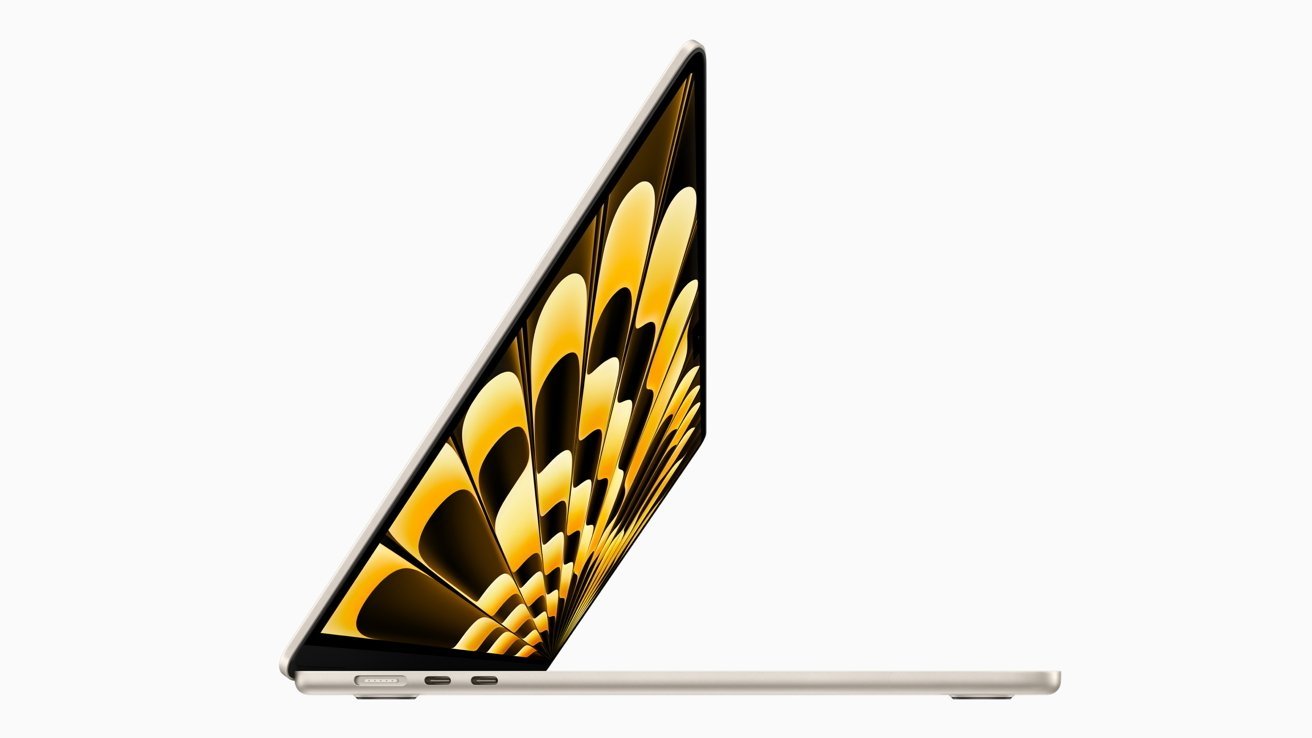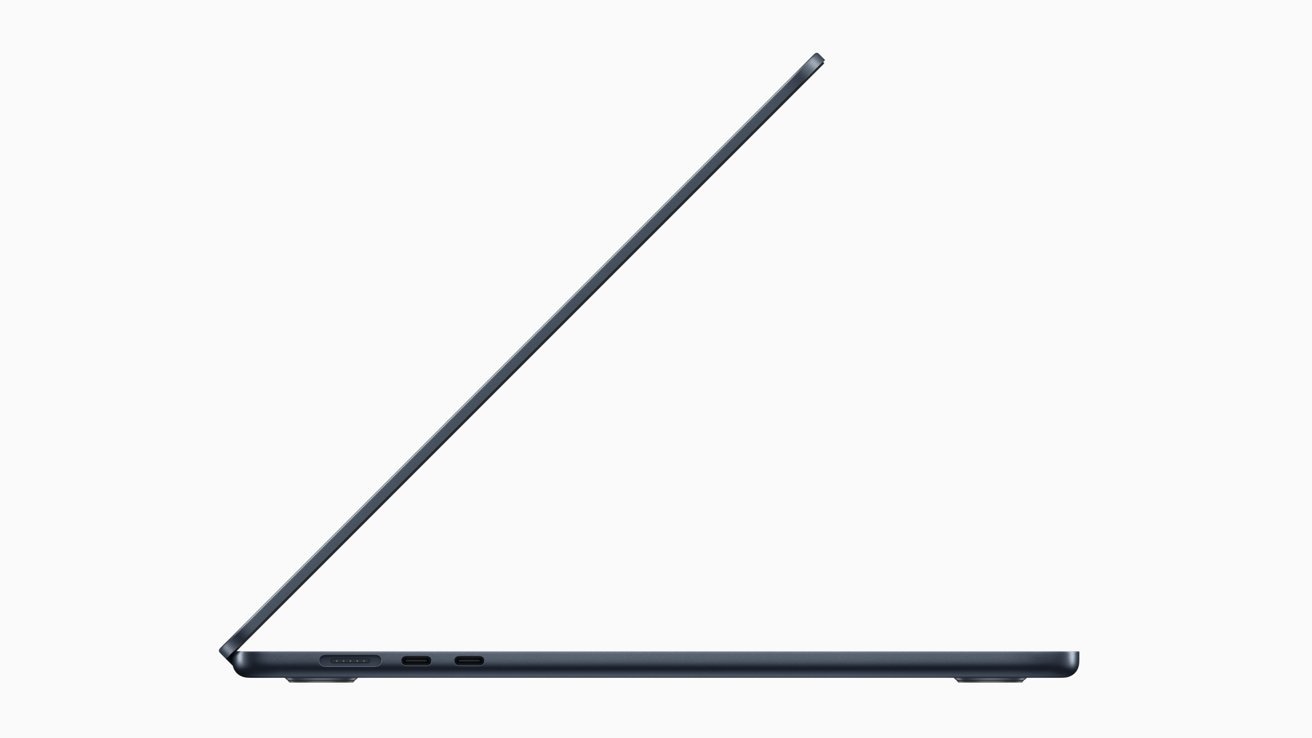Apple executives reveal the very many engineering challenges that had to be overcome in order to create the new 15-inch MacBook Air.
During the WWDC keynote, Apple showcased the highly anticipated 15-inch MacBook Air that has received praise from reviewers. It has the same functionality as the 13-inch MacBook Air, including the powerful M2 chip, but distinguishes itself with its significantly larger screen.
Tom's Guide recently interviewed Kate Bergeron, Apple's vice president of hardware engineering, and Laura Metz of Apple's Mac product marketing team, to discuss how the company achieved the device's thinness and why it released a MacBook Air in a larger size.
Design
Metz began by highlighting Apple's observation of the considerable presence of PCs featuring 15-inch screens in the market. Recognizing that there might be customers who want a more prominent display but don't necessarily require the performance of a MacBook Pro, Apple believed that these customers would value the expanded screen size of a MacBook Air.
"The Air is known for having this amazing feature set and awesome combination of performance and portability," she said. "It's not just about being thin and light but also having amazing battery life so that you can use the device wherever you want to go throughout the day."
To develop a 15-inch MacBook Air with the same slim profile as the 13-inch model, Apple prioritized the aspects of reliability, performance, and durability.
"The display where the LCD needs to be structurally really sound," Bergeron explained. "And so we use a structural adhesive to attach the panel to the chassis piece that we call the display housing."
When it comes to laptop materials, certain companies have explored the use of magnesium alloy to reduce weight. However, according to Bergeron, while Apple continuously explores alternative options to aluminum, she emphasized that aluminum alloy offers superior thermal conductivity and durability.
"Aluminum alloy is not massively better, but it's better enough in order to achieve what we want to in these products," she explained. "We work with the alloys team to design higher strength alloys, and we can take advantage of that, which supports going to these 11.5 millimeter-type enclosures."
Speakers & battery
Bergeron noted that one advantage of the 15-inch MacBook Air compared to its 13-inch counterpart lies in its speaker system.
"We were able to add two more woofers to the 15-inch versus the 13-inch and we are using that larger screen size to afford us that ability," she said. "We offset the force-canceling drivers in the width of the product because we have to take advantage of that larger footprint."
To accommodate the increased power demand of the larger display on the new MacBook Air, the team also made a necessary adjustment by increasing the battery size.
"So we're able to use the bigger product to grow the battery a little bit and take advantage of the space," Bergeron continued. "We can also grow the trackpad and we can still have great MacBook Air battery life."
Engineers implemented thermal control loops and used software optimizations to achieve Apple's stated claim of the 15-inch MacBook Air's impressive 18-hour battery life.
"The workloads for a typical MacBook Air owner are fairly bursty, meaning they may do something for a few minutes and then walk away from their computer and either have a background process running that's pretty light or just doing nothing at all," she continued. "And so we can go in and tweak the levers in the silicon and software to be able to take advantage of these gaps in time and really take the power down to the most minimal level."
In general, Bergeron expresses that the development of the new MacBook Air presented a significant engineering challenge, more than what many people might realize. However, she emphasizes that Apple doesn't want customers to focus on those technical details.
"We don't even want people to consider that," she said. "We want to do everything that we can to make this experience great."
The larger size MacBook Air means that for many people, it's going to make for a difficult choice between this and the MacBook Pro.
 Andrew Orr
Andrew Orr









-m.jpg)






 Charles Martin
Charles Martin
 Christine McKee
Christine McKee
 Wesley Hilliard
Wesley Hilliard
 Malcolm Owen
Malcolm Owen

 William Gallagher
William Gallagher
 Sponsored Content
Sponsored Content








10 Comments
LOL LOL LOL Every time Apple does some relatively little thing, we have to read about what it big deal it was. Yeah, there were so many amazing challenges we had to overcome to make the screen 2 inches bigger. It took a whole re-imagining of what 15 inches is. All the engineering and other struggles. The late nights. The channeling Steve Jobs. The ordering of bigger screens and consequent adjustments to a computer case. I can't even imagine. It's like sending people to Mars or building the pyramids. We can't even comprehend how Apple's highly skilled and paid engineers were able to rise this challenge of doing a thing that Apple has done for years. It's not just 2 inches, it's slightly more than 5cm, and that required careful study of the metric system. . We don't even want people to consider all this mundane work we are bragging about, just enjoy.
Is sarcasm your middle name? Completely unnecessary comment.
The sum of little things is exactly what makes Apple products so much better than competition.